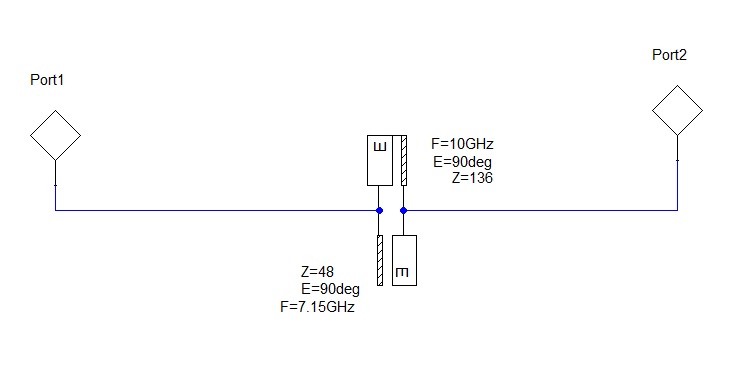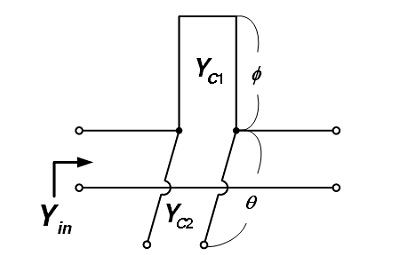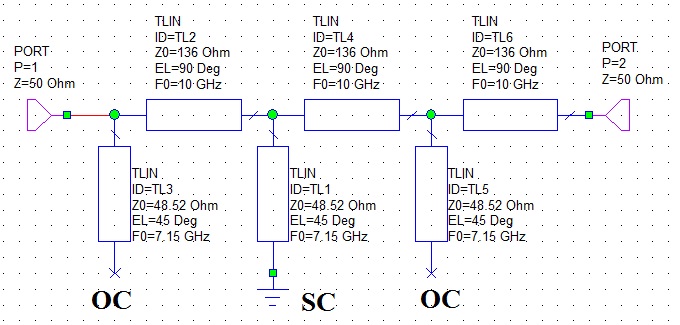Implementing SERIES open and short circuited stubs in AWR
My question is how can I implement SERIES short circuited and open circuited stubs or even a parallel or series combination of both in AWR.
Of course, we can easily implement SHUNT open and short circuited stubs using TLIN or MLIN. But
how to implement the series ones?

The series connected lines should be differential coplanar strips, isn't it?
Differential Coplanar Strips?
Anyways, the components are available in Ansoft Designer. Here is the snapshot of how I implemented in Designer.

But, now the problem is how to calculate its input admittance.

Can anyone Help?
The question isn't specific to series connected transmissions lines I think. You said you know how to implement shunt lines, so what's the problem with series lines?
You get the input impedance of a shorted/open transmission line by a simple rotation operation, e.g. for a shorted line
Z1 = j Zo tan(2 pi l/λ)
1. The component available in AWR is TLIN or MLIN, I suppose. This can be used to implement shunt OC and SC stubs, which again I am assuming here.

But how to implement series OC and SC stubs in series with the transmission line. Do you mean something like this?

But, it won't work! It is not grounded and the electrical length is twice the normal one. Well, if you can suggest any other method, you are welcome.
2. Obviously! But, can you please tell me how to calculate Yin or Y11. I think it is a parallel LC in series with the transmission line, isn't it? In case of lumped elements, Y11 can be easily solved by Y matrix or Z matrix. But, how to in the case of transmission line stubs?
Unfortunately the attachments aren't readable.
As said, a series connected transmission line stub should be implemented as a symmetrical (differential) transmission line, similar to the second drawing in your post #3. Parameters are line impedance Z0 and electrical length, they can be converted to an frequency dependent impedance (or admittance) at the line end. I don't however understand your double length point.
Any real transmission line will has a finite common mode impedance also if it's made without a ground. It has to be analyzed as additional transmission line(s).
For small band signals in steady state, the transmission lines can be modelled as lumped elements.
You are too advanced!
I have re-loaded the images. Please check it!
Please help me to find the input impedance. A little bit of derivation should help me understand it.
Like the total admittance that I obtained was:
Yin = Yin_Yc1+Yin_Yc2
As they consist of open and short circuited stubs,
Yin_Yc1 = jYc1 tan (phi) (SC, hence an inductor)
Yin_Yc2 = -jYc2 cot(theta) (OC, hence a capacitor)
Hence Yin = jYc1 tan (phi)-jYc2 cot (theta)
Is this right by any chance? As the stubs are in parallel and in series with the line, this creates confusion!
TLIN and MLIN are ground referenced transmission lines which can model coax- or microstrip-lines, but not differential transmission lines with independently configurable common mode impedance. In so far I agree that they don't work for the intended purpose.
I'm not familiar with AWR MWO. In ADS, you can e.g. use CLIN or MCLIN to model differential lines, I presume similar devices are also available in MWO.
